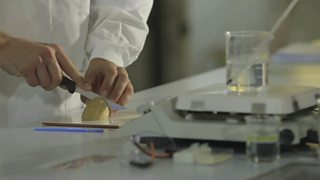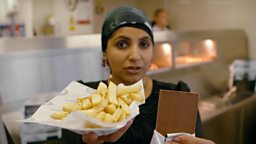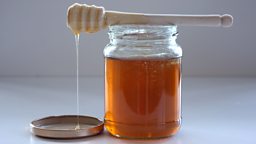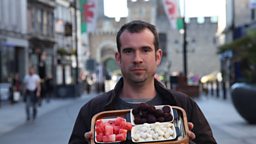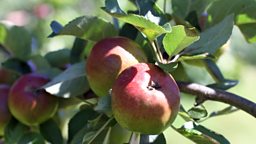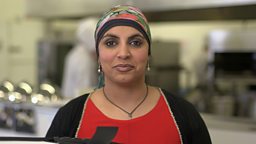Can my leftovers be healthier than the original meal?
Most of us love starchy carbohydrate foods like bread, pasta and potatoes — but they’re not always good for our health. Although starch is an important part of a healthy diet, it’s easily broken down. As soon as we consume starch the body very quickly starts to digest it, releasing sugars into the blood which in turn causes our bodies to release the hormone insulin. It’s a boom and bust cycle that can take a toll on our health.
Dr Chris van Tulleken joined forces with Dr Denise Robertson from the University of Surrey to carry out an experiment. We wanted to find out if there is a simple way to make starchy foods better for us without changing a single ingredient. What no one expected was that we’d make a brand new scientific discovery along the way.
When starch is cooked in water and then cooled it changes shape. The new structure is resistant to enzymes in our body and so can’t be digested- it’s known as ‘resistant starch’. Resistant starch passes through the body without being digested until it reaches the colon where it acts like fibre and feeds our ‘good bacteria’.
The health benefits of resistant starch
- When regular starch becomes resistant starch, most of the sugars it contains aren’t released in your gut and so your body will take in fewer calories from the same food.
- Because less sugar is released into the blood stream from this resistance starch, there’s less of a blood sugar spike. In turn, this reduces the levels of insulin in the blood.
- Resistant starch is indigestible and so shares many properties with fibre, helping food pass through the gut and generally improving digestion.
- Once it reaches the lower gut, resistant starch feeds our beneficial bacteria, which in turn produce chemicals which can help our immune systems, cardiovascular health and many other benefits.
Researchers have known about resistant starch for over twenty years but despite its health benefits it’s not something that we hear about very often. However, our experiment revealed a whole new way to improve the healthiness of our food that surprised everyone.
The experiment
The volunteers underwent 3 days of testing. Each day they had to eat a bowl of white pasta, topped with a simple tomato sauce.
On one day they ate pasta hot, when it was freshly cooked.
On a second day they ate pasta cold, after it had been chilled overnight
On a third day they ate pasta which had been chilled and then reheated.
Directly after they’d eaten their bowl of pasta each volunteer took their own blood sample every fifteen minutes for two hours. We analysed these samples to find out how much glucose they had in their blood and plotted how their blood sugar level changed as they digested the meal.
Results
When the volunteers ate the hot, freshly cooked, pasta their blood glucose showed the expected sharp rise and fall, shown by the green line in the graph below. But when they ate the chilled pasta, the blood glucose didn’t rise as much (the blue line on the graph). The cold pasta therefore didn’t cause the unhealthy surges in blood sugar and insulin.

The surprising results, though, were from the volunteers who ate the reheated pasta, shown by the red line on the graph. This had never been tried before and the results were striking: the blood glucose in these volunteers rose 50% less than it did after eating even the chilled pasta, with its known health benefits! This means that simply reheating your pasta (and probably potatoes and other starchy foods) after chilling it in the fridge makes it much healthier – protecting you against sharp spikes in blood sugar and giving you all the benefits of fibre, without having to change what you’re eating.
Why only 10 volunteers?
Several people have asked why only 10 volunteers could give us such strong conclusions. We did our experiment according to the WHO protocol for this sort of testing, and 10 volunteers tested this way have been shown to give statistically robust results (adding more gives diminishing returns). See this scientific paper for more details.
Dr Robinson hopes to publish the results of this experiment, and when the paper is published we shall make the full details of the method and statistical results available.
This graph compares the amount the blood glucose rose and fell with each different meal
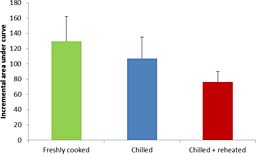
Sources of resistant starch
There are plenty of foods which contain resistant starch without even having to create it through cooking methods such as chilling and reheating.
- Unripe bananas contain lots of resistant starch. The resistant starch becomes digestible as the bananas ripen and cooking will also destroy the resistant starch, so choose bananas with just a hint of green on them if you want the benefits.
- Whole grains are good sources of resistant starch as well as fibre.

